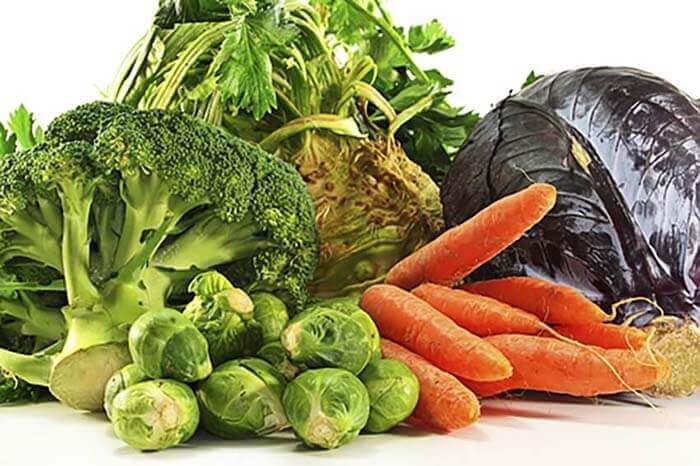
The fall brings colder and damper weather, a beautiful array of autumn produce, and with it, a desire for heartier and more warming dishes.
Every fruit, vegetable or meat has its season when it is at its tastiest and most abundant. We always love to cook as many dishes as possible, especially autumn vegetables and fruits.
- Find out what's cooking
An array of colourful fresh autumn produce
Probably the most famous of the autumn vegetables is the pumpkin. It is seen as a typical October or November vegetable for its vibrant autumnal colour, as well as the Pumpkin's relation to Halloween!
Read: Foods to eat and void with skin conditions
Storing and eating pumpkin
A pumpkin can be kept in a cool, dry place for weeks and is perfectly suitable for soups, stews, as a sweet dessert, or even tasty muffins!
In the same squash family as pumpkins are the slightly more bland marrow (easily dressed up with a tasty meat stuffing) and the comforting butternut squash with its delicious nutty flavour – both are perfect choices to add to the menu this time of year.
Green autumn vegetables high in iron
Green vegetables such as cabbage, Brussels sprouts, kale and spinach are very high in iron and are popular foods to eat in autumn. They are versatile and can be simply served with a knob of butter and good seasoning, sautéed with bacon, or stir-fried in an Asian-inspired menu.
MORE FOOD & DRINKDon't forget your Brussels
One thing's for sure, no Christmas lunch menu would be complete without a generous serving of Brussels sprouts such as this tasty Brussels recipe from Nigella, for that matter during the autumn/winter period, the Brussels sprouts can often be found gracing the plates of the traditional British Sunday lunch.
Mushrooms feature on the autumn produce menu
The cool, damp and (relatively) dark autumn days are perfect conditions for growing all kinds of mushrooms. Mushrooms are a great accompaniment for many dishes, sometimes used as a topping, or to bulk out a dish.
What goes well with mushrooms?
Mushrooms are delicious autumn produce when eaten with fish, ham and chicken, especially when served with cheese, they add an earthy taste to game and are also ideal as the principal ingredient in a vegetarian dish – and often used as a more than adequate meat substitute.
Autumn root vegetables
Root vegetables also come into their own during autumn. Beetroot, carrots, potatoes, swede and turnips all give that sweet, homely and comforting flavour.
How are root vegetables prepared?
Popularly, root vegetables are roasted – they are especially good with herbs such as rosemary and are mixed in a roasting tin with a splash of olive oil, balsamic vinegar and Maldon salt.
It is also not uncommon to see root vegetables as a prominent part of a soup, mashed or pureed.
Other types of root vegetables
There are other less well-known autumn root vegetables, such as the Jerusalem artichoke, celeriac and the kohlrabi. The Jerusalem artichoke is not an artichoke, and does not come from Jerusalem – it is part of the sunflower family and originates in the USA! The Jerusalem artichoke adds a good flavour to stews and casseroles and is great with game.
Celeriac and kohlrabi
Celeriac is part of the celery family, only the root of the celeriac is eaten! It’s wonderful grated into a slaw, made into a creamy soup or served on its own with melted butter. Coming from the wild cabbage plant, the kohlrabi is used extensively in Asian cooking and can be eaten either cooked or raw. It is quite lovely grated into a salad and very good with fish.
Festive, fruits and nuts
Autumn produce doesn't only mean vegetables. The autumn also brings a wealth of fruit. The good old British apple comes to the forefront at this time. Many of us have apple trees in our gardens and always endure the frustrating problem of one week having no fruit at all and the following week we are inundated with a huge bounty of sweet and delicious fruits.
What do you eat apples with?
Apples are eaten are served with everything from a traditional apple pie to pork with apple sauce, as well as apple and walnut salads.
What are apples good with?
Apple is very good with cheese, whether served on a cheese board, baked in a savoury crumble with cheese and red onion, or even mixed with a variety of herbs, nuts and breadcrumbs to produce stuffing.
Chestnuts, pear and walnuts are also popular seasonal produce and are delicious together and yet each has a wonderful individual flavour.
Buy autumn produce locally and support your local farm shop
When it comes to buying seasonal vegetables and produce, it's best to source your ingredients locally as much as possible. Fresh local ingredients are superior to supermarket produce. Besides, it's not only the taste, but you will also get that warm fuzzy feeling from doing something good like supporting your local farm shop and farmers market.
Using seasonal produce is not only economically beneficial, but it is also central in creating the flavours, aromas and comforting ambience we expect at this time of year.
Happy cooking!






